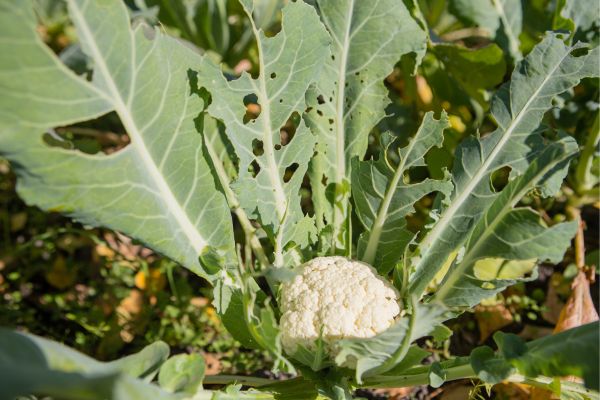Your cart is currently empty!

25 Sep Impact Of Earwigs On Crops: Management Approaches To Control Them
Earwigs are small insects often recognized by their distinctive pincers located at the end of their abdomens. While they play a role in ecosystem balance by preying on other insects, they can become agricultural pests under certain conditions. This blog explores the impact of earwigs on crops and discusses effective management approaches to mitigate their adverse effects.
Impact of Earwigs On Crops
- Feeding Habits: Earwigs are nocturnal insects with a diverse diet that includes both plant material and other insects. They can damage crops by feeding on leaves, flowers, fruits, and even seedlings. This feeding behaviour can lead to cosmetic damage, reduced yields, and in severe cases, complete crop loss.
- Favourable Conditions: Earwigs thrive in damp and dark environments, making crops like lettuce, cabbage, and other leafy greens particularly susceptible to infestations. They are also known to damage fruit crops such as strawberries and raspberries by consuming ripe fruits or burrowing into them, rendering them unmarketable.
- Transmission Of Plant Diseases: Earwigs can inadvertently contribute to the spread of plant diseases. As they move from plant to plant, they can transfer pathogens, facilitating the onset and spread of diseases that impact crop health.
Management Approaches:
1. Cultural Practices: Implementing certain cultural practices can help reduce earwig populations and their impact on crops:
- Sanitation: Regularly remove plant debris, weeds, and fallen fruits from the field to eliminate potential hiding spots.
- Mulching: Use dry mulch instead of moist mulch to discourage earwig activity in the planting area.
- Crop Rotation: Rotate crops annually to disrupt earwig breeding and feeding patterns.
2. Physical Barriers And Traps: Employing physical barriers and traps can help control earwig populations without resorting to chemical methods:
- Straw Traps: Place damp straw or newspaper near the base of crops. Earwigs will seek shelter there during the day, allowing you to collect and remove them.
- Cardboard Traps: Similarly, cardboard traps coated with petroleum jelly can be effective in capturing earwigs.
3. Natural Predators And Biological Control: Introducing natural predators and beneficial insects can help keep earwig populations in check:
- Birds, Toads, And Frogs: Encourage these natural predators to inhabit your fields to feed on earwigs.
- Beneficial Insects: Release beneficial insects like ground beetles and predatory wasps, which will target earwig eggs and nymphs.
4. Reduced Attractants: Minimize factors that attract earwigs to your crops:
- Artificial Lights: Reduce the use of bright lights around fields as earwigs are attracted to light at night.
- Water Management: Avoid over-irrigation, as excess moisture creates a favourable habitat for earwigs.
5. Chemical Management: While chemical methods should be a last resort due to potential environmental impacts, they can be used if other strategies are ineffective or if the infestation is severe. Always follow label instructions and opt for environmentally friendly options.
Earwigs’ impact on agriculture can be significant, affecting crop quality and yield. However, with proper management strategies, their adverse effects can be mitigated. Cultural practices, physical barriers, biological control, and reduced attractants are critical components of integrated pest management approaches that emphasize sustainability and environmental stewardship. By striking a balance between pest control and ecosystem health, farmers can effectively manage earwig populations while safeguarding their valuable crops.
Are you facing challenges with earwig infestations affecting your valuable crops? The Environmental Factor has the perfect solution for you – Nema Globe Flea & Chinch Bug Buster! Take control of your agricultural landscape and safeguard your crops with this effective and eco-friendly pest management solution.
Ordering Nema Globe Flea & Chinch Bug Buster from The Environmental Factor is simple and convenient. Visit our website to explore more about the product, its benefits, and the positive impact it can have on your crops.


